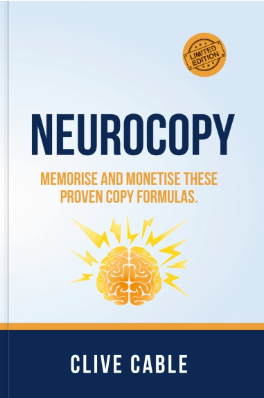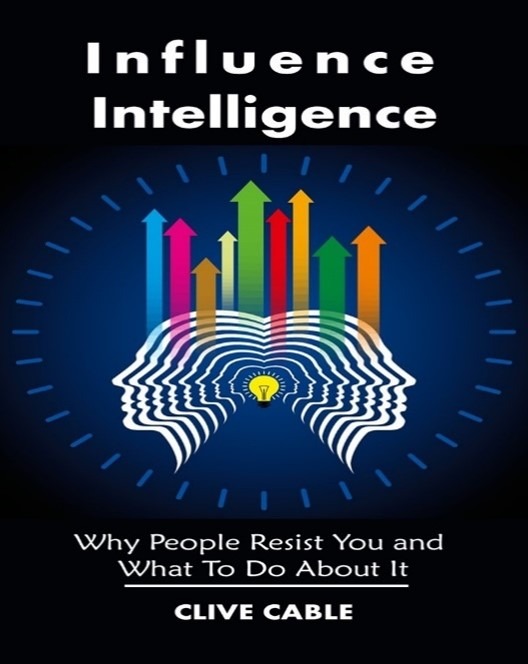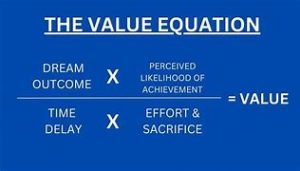Life should NOT be a journey to the grave with the intention of arriving safely in an attractive and well-preserved body, but rather to skid in sideways, chocolate in one hand, martini in the other, body thoroughly used up, totally worn out and screaming “WOO HOO, what a ride!”
Why is this so powerful?
If you say something once people usually ignore it.
Say it twice and people think it’s a coincidence.
But say it three times and now the brain picks up on a pattern.
When you say something three times your listener will stop and take notice because it’s a form their mind is familiar with.
In other words… anything said in groups of threes will have the power to stop people’s own internal chatter long enough for you to get your message across.
I’m going to come back to that thought in just a moment.
And when I do it’s going to be from a scientific angle. Plus I’m going to bring you a breakthrough that you won’t have come across anywhere else.
How do I know?
Because I’ve been working with, using and studying these patterns for more than 20 years.
And when that happens light bulbs go off and new realisations are made.
The realisations will have far reaching effects on the way you persuade from this point forward.
However, back to the power of threes.
Examples of threes include…
- The Father, the Son and the Holy Spirit.
- The good, the bad and the ugly.
- Healthy wealthy and wise.
- Wine women and song.
- Snap, crackle and pop.
- Once, twice, three times a lady.
- Before, during and after.
- Morning, noon and night.
I’m sure you’re familiar with most of these.
Children know about…
- Goldilocks and the three bears.
- The three musketeers.
- The three little pigs.
- A Christmas Carol and the three Christmas Spirits.
- The Lion, the Witch and the Wardrobe.
- The three blind mice.
This pattern largely goes unnoticed. It’s everywhere we look. We’re told things like…
“Hear no evil, see no evil, speak no evil.
I came, I saw, I conquered.
And there’s the classic self-help mantra…
be – do – have.”
Not forgetting…
- Good, better, best.
- Blood, sweat and tears.
- Thoughts, words actions.
- Birth, life and death.
Threesomes may be a fantasy for men (see how pervasive this pattern is) but its effect is far reaching.
Our brains look for patterns.
As persuasion is the number one skill in our society you and I should make this an in depth study.
Even scientifically!
Yes with the power of language combined with the knowledge of how people are persuaded we can almost move mountains.
While there are many NLP patterns to choose from it’s best to start with an easier choice and move to more advanced patterns as you progress.
When you learn this pattern you’ll persuade more people, get others to do what you want and influence like you’ve never done before.
The pattern I want to introduce to you is the repetition of threes.

Your brain is a meaning making machine.
The fact that you’re interested in this pattern and given the fact that it is fascinating and together with the fact that it’s so easy to use once you’re aware of its existence means you can use it whenever you want.
Are you beginning to see a pattern here?
I hope so.
I’m also hoping you’re enjoying the way I’ve put this together for you.
Earlier I mentioned about the science behind why these linguistic patterns work.
Here’s what I found.
The French neurosurgeon Paul Broca discovered an area of the brain when working with patients with language problems.
It’s an area that rests on either side of your ears. It’s tiny yet powerful.
Broca’s area has one function, listening to conversation.
When we read we translate the words into auditory text in our head.
This is done pre-cognitively.
Broca’s area is listening for things we already know.
Patterns we recognise.
And what we don’t need to pay attention to.
It’s trying to save you the effort of moving words into active consciousness… it just moves it through your brain.
You know the saying, “in one ear and out the other?”
A great example is the husband who is constantly nagged by his wife. Or the guy talking to his girlfriend about last night’s football game.
That’s Broca’s area for you.
When there’s no reason to pay attention to what’s being said, Broca’s area sends it through your brain without your awareness.
It pre-decides what to pay attention to and what to ignore.
So if you’re wondering why this is important I’ll tell you.
All marketing is verbal.
When you read anything you are continually turning it into “sound bytes” in your head.
Forget what you’ve heard about visual people or kinaesthetic people.
Most marketing and copywriting is sent through Broca’s area.
That is the brain doesn’t pay any attention to it.
What it looks for is something new, different, or surprising to pay attention too.
So Broca’s area acts as a filter before you become consciously aware of something.
The decision to pay attention has already taken place before you’re aware it has.
People are looking for new and valuable information to pay attention to.
So when you as a persuader use hypnotic stories or something like the NLP persuasive pattern called repetition in threes Broca’s area takes notice and pays conscious attention to what’s coming up next.
What you’re doing here is making Broca’s area work for you by putting your message into the conscious mind your listener.

Anything less and it falls on deaf ears.
So that brings me back to the repetition in threes.
Here’s a funny example from the genius Terry Pratchett.
A fiery punctuation mark… a coal-like comma… or salamander semi-colon.
This pattern gets the attention of Broca’s area because it’s unexpected so it sets up anticipation.
It’s like a wakeup call to the brain.
And the brain loves to be woken up to something different and stimulating.
It’s an addiction, and like any addiction, we can’t get enough of the stuff.
And on that note let’s look at the lyrics from a well-known song written by Robert Palmer.
“The lights are on, but you’re not home, your mind is not your own.
Your heart sweats, your body shakes, another kiss is what it takes.
You can’t sleep, you can’t eat, there’s no doubt you’re in deep.
Your throat is tight, you can’t breathe, another kiss is all you need.
You like to think you’re immune to the stuff.
It’s closer to the truth that you can’t get enough.
You know you’re going to have to face it you’re addicted to love.”
Sheer genius!
Can you see the patterns of three?

Want an unfair advantage over 98% of ordinary copywriters?
Forget the basic copy formulas that no longer work. BAB (Before and After Bridge) PAS (Problem Agitate Solve) AIDA (Attention – Interest – Desire – Action) buyers are immune to these.
BUT the 13 ways to intensify desire, the One Belief 10 Questions or the 12 Proof Elements – all sales copy must have are these proven million dollar winners.
They are all here (and more) inside this book.




